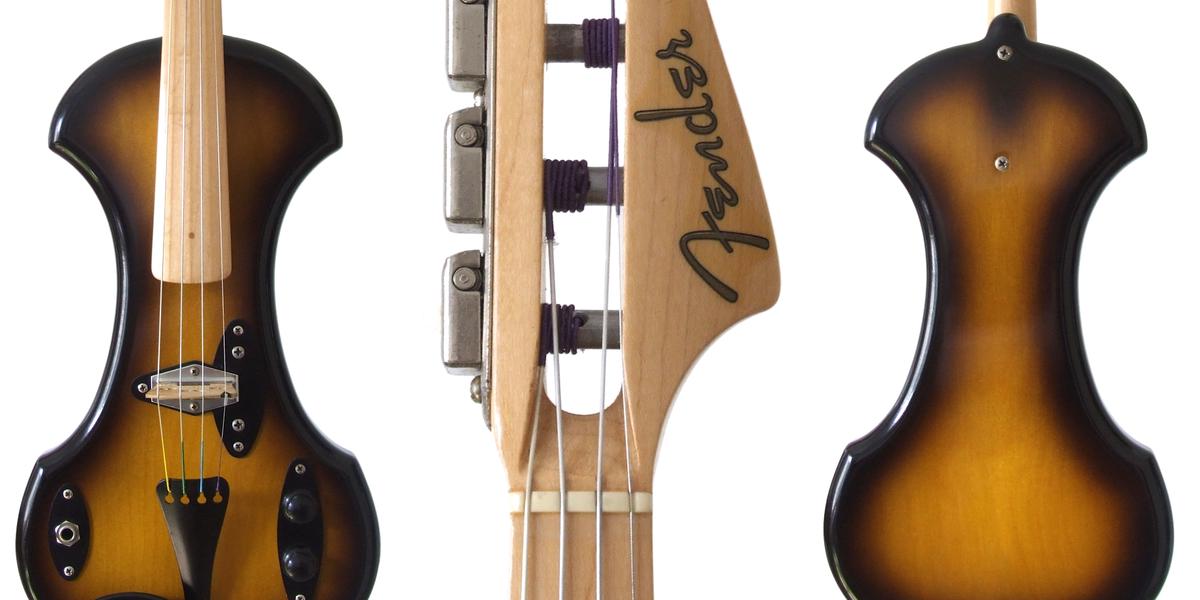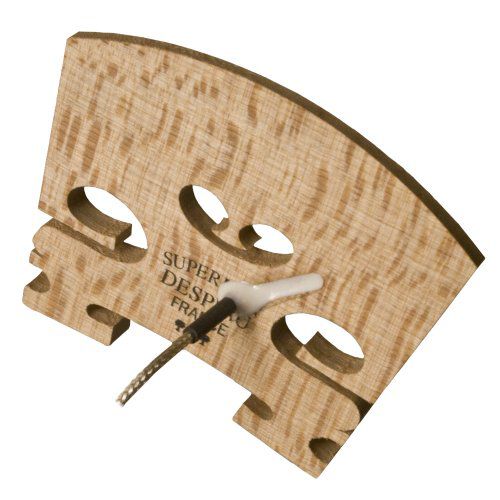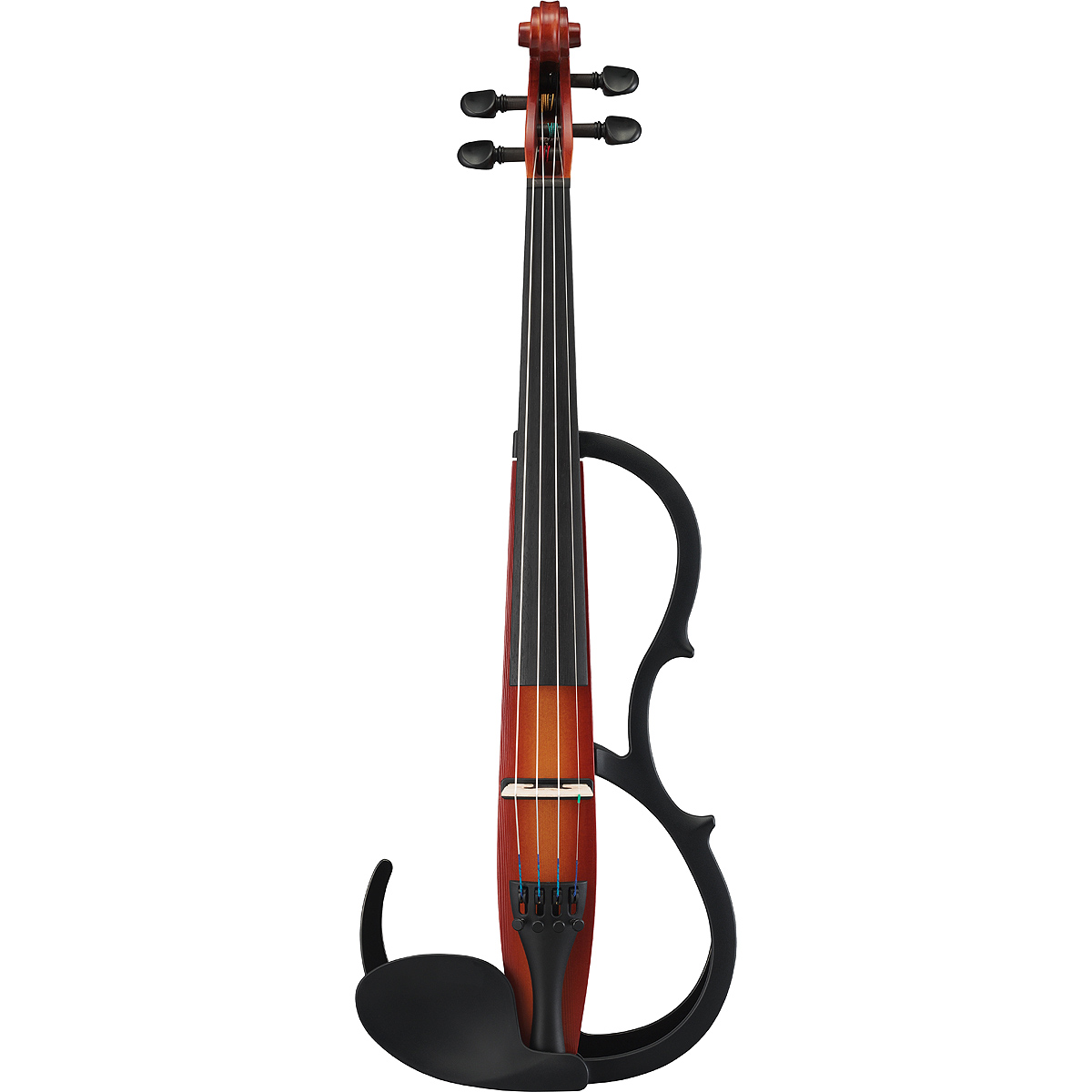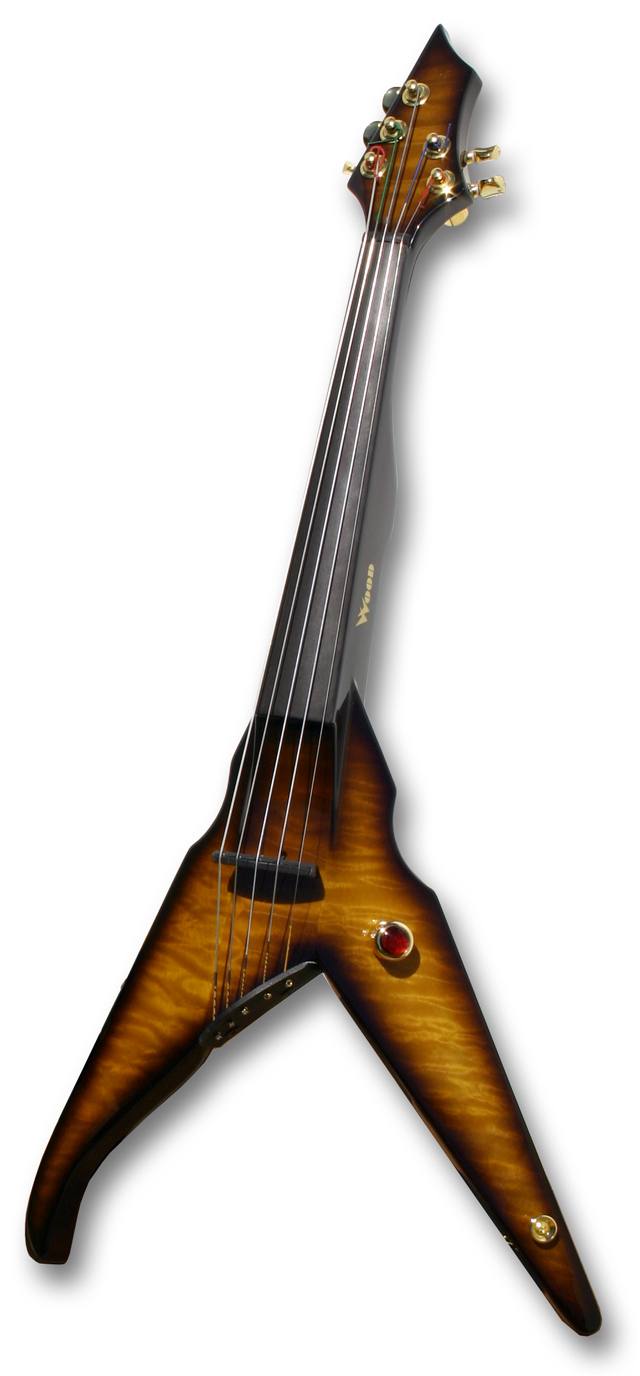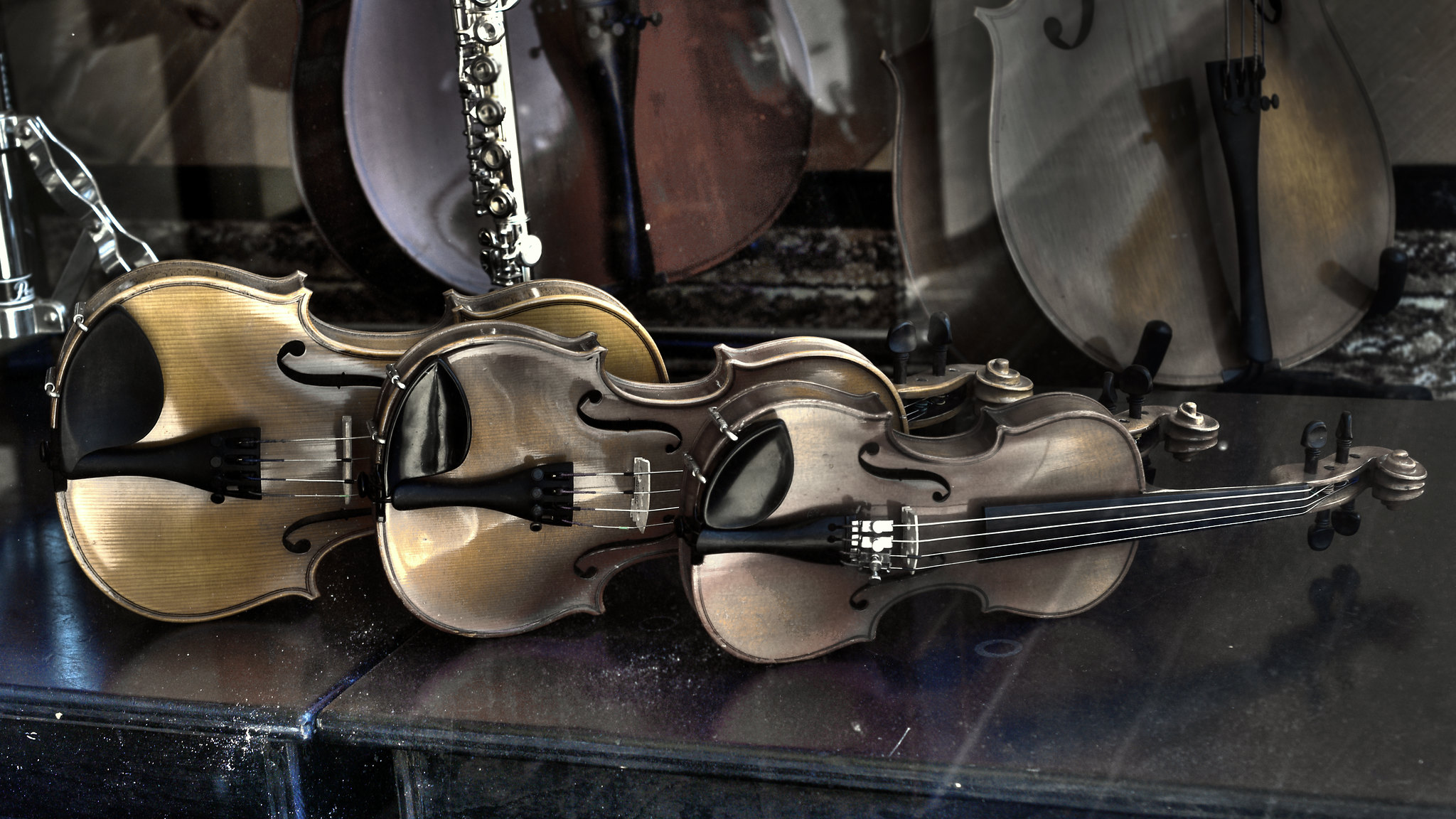History
When the very first electric guitar stepped onto the music scene, the world of music was changed forever. Invented by George Beauchamp in 1931, The Rickenbacker “Frying Pan” was never intended for Rock and Roll music or a bluegrass band! It was used as a lap guitar, like the ones used in Hawaiian music so popular in that time period.
When instrument manufacturers saw how popular the electric guitar quickly became, they scrambled to make their own instruments also electric. The violin was no different. By the mid-1930s, violin makers were constructing and selling their own instruments, not wholly unlike the skeleton-type electric violins we see for sale today.
Today’s electric violin makers include the likes of Yamaha, Cecilio, Sojing, Zeta, Fender, Irin, Mark Wood, Viper, and Carlo Robelli. All these manufacturers have benefits and unique traits that sell their respective violins. They all took their cues from the pioneers of electric guitar-makers and their predecessors in the violin lutherie world whose audacious ideas to electricity a very traditional instrument rocked modern violin music.
Broadly speaking, the electric violin itself does not differ from the main components of the acoustic violin. They both have a violin bridge, a violin chin rest, and violin shoulder rest. They have a nut and the 4 traditional strings that a violin has. The pegs must move smoothly in order to be tuned, and often they have fine tuners and a scroll. Their general shape is the same of an acoustic violin, although the body might be skeletal, not solid. The length of the instrument is the same as the acoustic, and thus musicians find it easy to switch from one to the other without relearning their hand position! Both use a traditional violin bow on their instrument, as well as rosin on the bow. Hand position and bow hold are also the same.
However, many electric violins do not have a hollow body and a sound post, nor all the resonance that a traditional violin would have. There are often dials and buttons on an electric violin that clearly do not exist on an acoustic. There is always a jack for a cable to project to the electric violin amp or sound system, as without electricity and a microphone, the instrument is noticeably muted. Plan on using an electric violin in your symphony, and you’ll likely be asked to get a different instrument to play: it just isn’t the same as an acoustic as far as its ability to project tone. This makes sense since the violin’s resonance is a result of its hollow body and the soundpost within. In order to project fine tone, the sound waves must penetrate the body and vibrate through the sound post.
Jazz, Rock and Roll, and World Music
Every genre of music (except perhaps classical and its old-school ways) was interested in the new electric violins and what they could bring to the table. Everyone from Broadway producers and pit orchestras to jazz musicians and rock and roll gods were all curious about how to integrate these newfangled instruments that would not get buried under an electric guitar or a drum kit. Jazz itself was quick to adopt electric violins into the mix of their world of experimental music. Blues wasn't far behind, and Rock and Roll was right on the heels of everyone.
In the rock game, one standout musician who blew everyone away was Don "Sugarcane" Harris, whose gritty, unapologetic sounds paved the way for violins in all kinds of main stage bands.
Jazz saw the advent of Jean-Luc Ponty and his blue electric violin. You can still catch him on tour, once in awhile, as his fame has followed him and his violin for decades. Check him out below:
Perhaps one of the most famous electric violin tunes for Rock and Roll bands was with Neil Young's Running Dry and Kansas's Dust in the Wind!
Fiddling and Celtic-inspired music never knew what hit it with Eileen Ivers and her acoustic-electric violin and her gritty, fantastic fiddling style. Not only does she play the fiddle beautifully, but she loops her tracks live with the best of the rest. Electric violins and their cousins the acoustic-electric violins allow an instrumentalist to experiment with sounds and technology that otherwise would never be possible outside of a recording studio.
It bears note that not everyone needs an electric violin at all times. Don't despair! If your budget doesn't allow you to buy a second instrument, perhaps it allows you to get an electric pickup for your acoustic instrument.
Violin pickups are quite economical, and they simply attach to the acoustic instrument's bridge, amplifying the sound of the acoustic instrument through an amp or a sound system. Many instrumentalists use violin pickups, myself included, and they are really helpful in opening doors of opportunity. Your buddy has a band that needs a violin? You're their person! Don't want to be mic'd at the wedding but still need to be heard? Plug it in! Need to play at the symphony with the rest of your peers? Keep it unplugged and give the Sibelius a good, acoustic effort!
Today's Instruments and Instrumentalists
Electric violins today come in a myriad of colors: electric violin in blue? Check. Electric violin in purple? Yep. Electric violin in yellow? Absolutely. In addition to being able to switch up your instrument's color like you may switch up your hair, you can also stick with tradition. Take Lindsey Stirling: electric violin in... wood-color. Yep, in addition to all those fantastically jarring colors, you can also have an instrument that looks and feels like wood. Lindsey's violin of choice has varied over the years, but she is currently using a Yamaha electric violin that looks exactly like it's made of fine wood (and then cut out to form a silhouette!).
Yamaha makes silent electric violins for recording artists like Stirling, who need an incredibly clean sound.
Stirling also uses a Viper electric violin in purple, as well as some lower-cost options for dangerous stunts in her videos. A lower-cost option would be one such as Cecilio, whose instruments are known to be budget-friendly. Remember that quality and price are often linked, so although some instruments are economical, their sound may not be as high-quality as other more expensive options, either.
The best electric violin is one that fits your needs. Personally speaking, my electric violin was actually acoustic-electric. I got an LR Baggs pickup installed onto my acoustic violin, and it not only projected my tone beautifully, but I was only out the hundred or so dollars that it cost to purchase my pickup. For me, this was the perfect option, because I was also heavily involved in solo work as well as the symphony in my community. I needed both acoustic and electric, and so I was well equipped for either scenario.
Yamaha's silent violin comes extremely highly rated, and it would be a sure-fire option for most instrumentalists looking to broaden their instrument battery without breaking their piggy banks. This option is not cheap by any means, but for a quality instrument that will serve you for the long-term, Yamaha has been shown to be top-notch.
Fender makes a beautiful instrument as well. Their solid-body style of instrument is not only beautiful to look at, but it has a beautiful tone and has stood the test of time. An instrumentalist looking to invest some money into a quality instrument would not be disappointed in this option.
If you're looking for a rock-and-roll look and a high-quality instrument that will serve you well, Viper makes a really awesome-looking and fine-sounding violin that will make audiences wonder what on earth you're playing. A violin with a solid body, but in a wild V-shape, this instrument will rock with the best. Note that this instrument not only has 5 strings, but it also has frets!
In Conclusion
Electric violins run the gamut. If you're looking for an instrument that will double in your needs for an acoustic instrument, an electric pickup is your best friend. Look for one that has excellent reviews and have it professionally installed.
If you're looking for an instrument that you need a crystal clean sound from, look for an electric violin with rave reviews, like Yamaha, whose Silent Violin is the go-to for musicians world-wide.
No matter what you choose, make sure you have the ability to try one out, either from a friend or from a vendor whose merchandise you can try before you buy. As with all stringed instruments, quality usually means a higher price tag, but not always! Purchase the instrument that is best for you, and you'll never be unhappy with the result.
